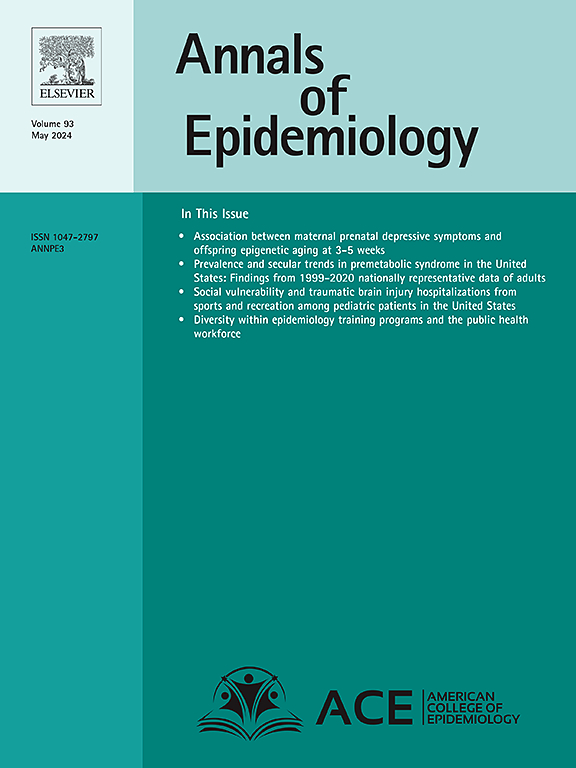The definition of treatment assignment in observational emulations of target trials – an empirical examination in the Swedish Primary Care Cardiovascular Database
IF 3
3区 医学
Q1 PUBLIC, ENVIRONMENTAL & OCCUPATIONAL HEALTH
引用次数: 0
Abstract
Background
In randomized trials, the intention-to-treat effect is the effect of assignment to treatment strategies. The concept of assignment may not be clearly defined when using observational data to emulate a target trial.
Aims
We aimed to assess the practical implications of using data on prescription versus dispensation as analogues of treatment assignment in observational analyses.
Methods
We used the primary care-derived Swedish Primary Care Cardiovascular Database of individuals with newly diagnosed hypertension between 2006 and 2014 and linked registers. We compared the effect of two antihypertensive drug classes on the five-year risk of cancer and ischemic heart disease. Treatment assignment was first mapped using prescription data, and then dispensation data. With unique confounding structures, we sequentially adjusted for different classes of risk factor due to uncertainty over the choice of relevant confounders for prescription vs. dispensation.
Results
7770 individuals were eligible when assignment was defined using prescription compared with 5964 when defined using dispensation. For both cancer and ischemic heart disease outcomes, both higher and lower relative risks of the outcome were consistent with our data. Effect estimates did not vary with the choice of prescription or dispensation data as analogues of assignment, nor with sequential adjustment for class of risk factor.
Conclusion
The mapping of prescription or dispensation data to treatment assignment influences the size and characteristics of the study population and the structure of confounding. However, we found no clear numerical differences in effect estimates in this study. Further investigation is required in other settings.
目标试验观察模拟中治疗分配的定义——瑞典初级保健心血管数据库的经验检验。
背景:在随机试验中,意向治疗效应是分配治疗策略的效果。当使用观察数据模拟目标试验时,分配的概念可能没有明确定义。目的:我们旨在评估在观察性分析中使用处方与配剂数据作为治疗分配类似物的实际意义。方法:我们使用了2006年至2014年间新诊断为高血压的瑞典初级保健心血管数据库和相关登记册。我们比较了两种抗高血压药物对癌症和缺血性心脏病五年风险的影响。首先使用处方数据绘制治疗分配图,然后是配药数据。通过独特的混杂因素结构,由于处方与配剂相关混杂因素选择的不确定性,我们依次调整了不同类别的风险因素。结果:使用处方定义分配时,7770人符合条件,而使用分配定义时,5964人符合条件。对于癌症和缺血性心脏病的结局,结果的较高和较低的相对风险与我们的数据一致。效果估计不随处方或配药数据的选择而变化,也不随风险因素类别的顺序调整而变化。结论:处方或配剂数据与治疗分配的映射影响研究人群的规模和特征以及混淆的结构。然而,我们在本研究中没有发现明显的数值差异。在其他情况下需要进一步调查。
本文章由计算机程序翻译,如有差异,请以英文原文为准。
求助全文
约1分钟内获得全文
求助全文
来源期刊

Annals of Epidemiology
医学-公共卫生、环境卫生与职业卫生
CiteScore
7.40
自引率
1.80%
发文量
207
审稿时长
59 days
期刊介绍:
The journal emphasizes the application of epidemiologic methods to issues that affect the distribution and determinants of human illness in diverse contexts. Its primary focus is on chronic and acute conditions of diverse etiologies and of major importance to clinical medicine, public health, and health care delivery.
 求助内容:
求助内容: 应助结果提醒方式:
应助结果提醒方式:


